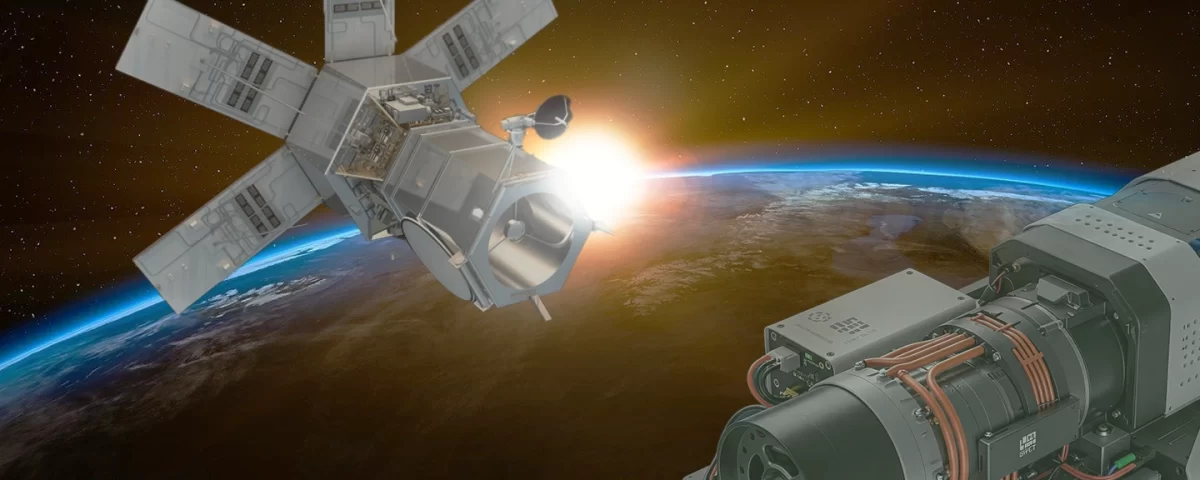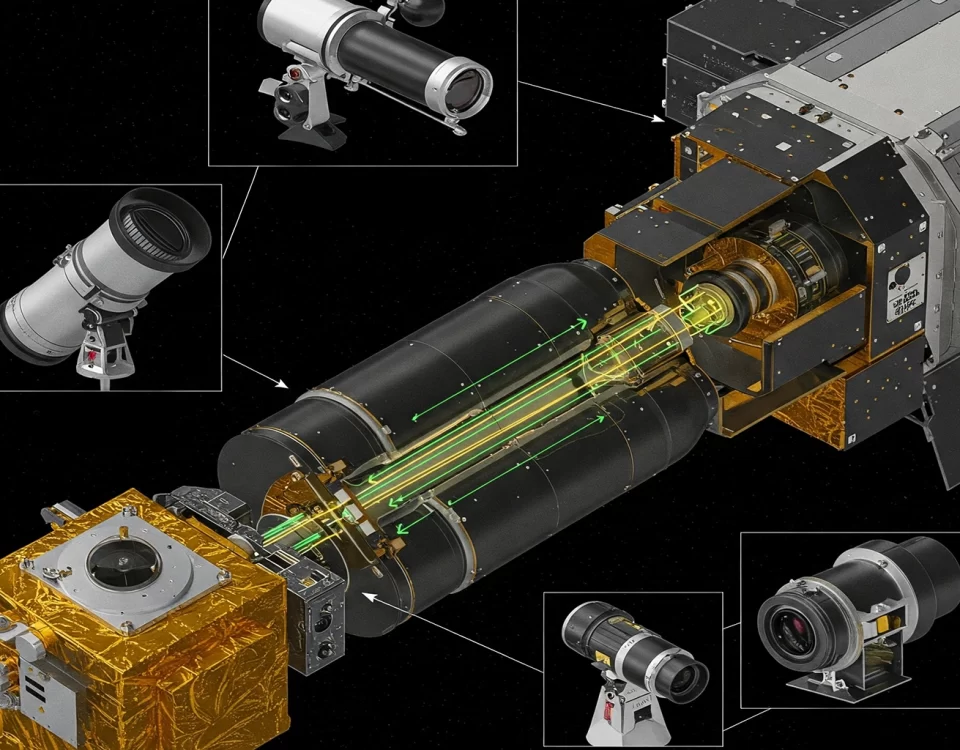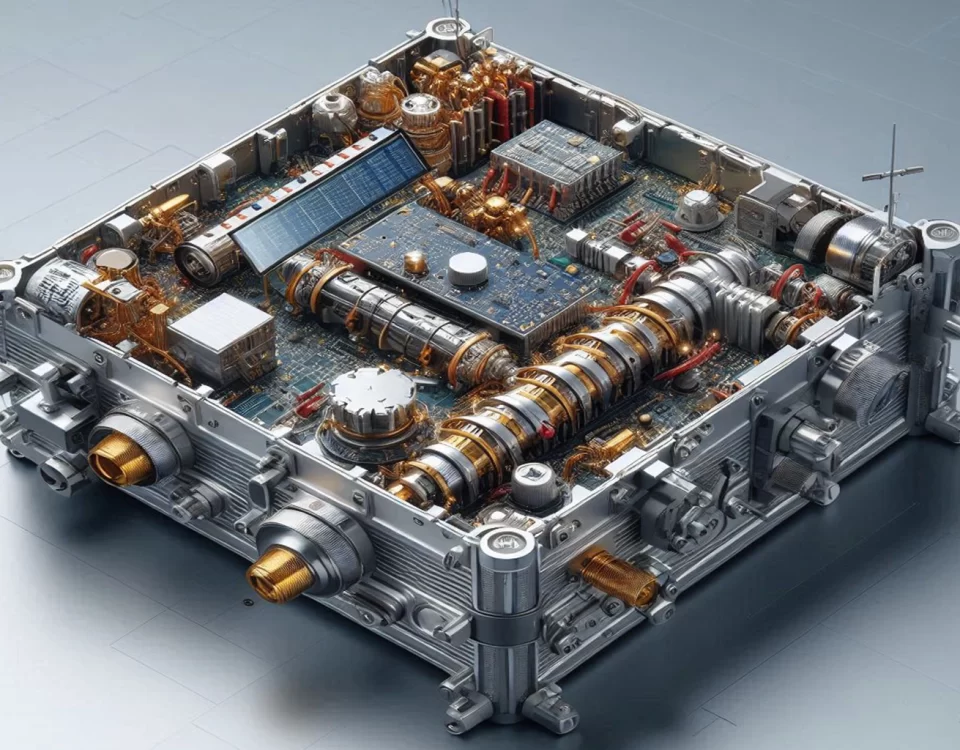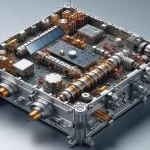
best S-band transceiver for reliable satellite telemetry
February 16, 2025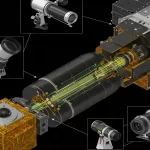
What are Optical Payloads?
February 19, 2025For a long time, satellites have used chemical rockets (burning fuel) to move around in space, including the important job of getting to the right orbit. These rockets work, but they have a downside: they’re not very efficient with fuel. This means satellites need to carry a lot of fuel, which makes missions more expensive, limits what the satellite can carry, and can shorten how long it lasts. Now, a new technology called electric propulsion is changing things. Electric rockets use electricity to move, and they’re much more fuel-efficient. This essay will explore how these electric rockets work, the good and bad things about them, and how they’re changing space travel.
what is electric propulsion systems?
Electric rockets move spacecraft by using electricity or magnets to push propellant, creating thrust. Unlike regular rockets that burn fuel, these electric rockets use electricity to speed up the propellant, making them much more efficient with fuel. This means they need less fuel to do the same job, which is great for things like getting to the right orbit, staying in place, and traveling far into space. There are different kinds of electric rockets, each with its own strength and weaknesses, so they can be used for different missions.
How do electric propulsion systems work?
Getting a satellite to its final working orbit is hard. It takes a big speed boost, and with regular rockets, that means lots of fuel. All that fuel makes the satellite heavy, which costs more to launch and means it can’t carry as much useful equipment. Electric rockets offer a better way. They use electricity or magnets to push the fuel, and they’re much more efficient, meaning they need less fuel for the same trip.
Types of electric propulsion systems
There are several kinds of electric rockets, each with its own way of working. They can be grouped into three main types: electrothermal, electrostatic, and electromagnetic.
- Electrothermal: Electrothermal rockets heat up a gas using electricity and then push it out to create thrust, like a simple heater. They’re not the most efficient, but they’re okay for some jobs like adjusting orbits.
- Electrostatic rockets: Electrostatic rockets, also called ion thrusters, use electricity to zap the propellant and push it out. They’re super efficient with fuel, but they don’t push very hard, so it takes longer to change orbits. A common type, the gridded ion thruster, uses grids to speed up the zapped propellant. Another type, Hall-effect thrusters, use magnets too, which helps them push a bit harder.
- Electromagnetic rockets: Electromagnetic rockets use both electricity and magnets to push the propellant. They can push harder than electrostatic rockets, but they’re also more complicated and need more power. One type, called MPD thrusters, uses electricity and magnets together to push the propellant really fast. Another type, called pulsed plasma thrusters, use small bursts of energy to push bits of solid propellant, making them good for small satellites.
Advantages of using electric propulsion for orbit raising
Electric rockets have lots of advantages for getting satellites to their orbits. Because they’re so efficient with fuel, they need much less of it. This means satellites can carry more equipment, last longer, and cost less to launch. This is especially helpful for big communication satellites or scientific missions that need lots of instruments. Less fuel also makes the satellite easier to design and build, saving even more money. Plus, electric rockets give very precise control, so they can take more efficient paths to their final orbit, sometimes even getting there faster.
Challenges of electric rockets
Even though electric rockets are great, they have some downsides too. Many of them, especially the ones that use electricity to zap the fuel, don’t push very hard. This means it takes longer to get to the final orbit than with regular rockets, which can be a problem if you need to get there quickly. But, new electric rocket technology is getting better at pushing harder. Another issue is that some electric rockets need a lot of power. This means the satellite needs big solar panels or other power sources, which can make the satellite more complicated and heavier. Also, because electric rockets, especially the more advanced ones, are complex, they need fancy control systems.
The effect of electric propulsion
Electric rockets are making a big difference in how we build and use satellites. They’ve allowed us to create bigger, better satellites that can last much longer. Because they need less fuel, it’s also become easier to launch and use smaller satellites and even tiny CubeSats, making space more accessible to everyone. Electric propulsion is key to putting huge groups of communication satellites into orbit, helping them get to the right place and stay there. And, because they’re so good at saving fuel, they’re even being considered for long trips to explore deep space.
In short, electric propulsion is a game-changer for getting satellites into orbit. Being super fuel-efficient, needing less fuel, and offering precise control are huge improvements over regular rockets. There are still some challenges, but technology is constantly getting better. Electric propulsion isn’t just a little tweak; it’s a whole new way of doing things in space, making it cheaper, more sustainable, and opening up exciting new possibilities. As we keep exploring space, electric rockets will be essential for getting us where we want to go.



